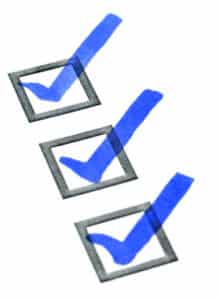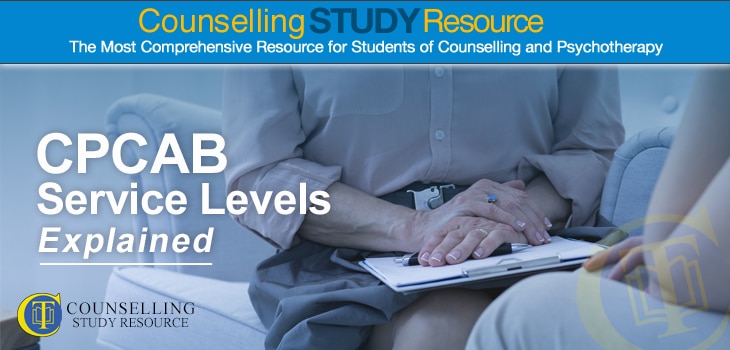CPCAB is an awarding body that accredits counselling qualification in the UK.
As such they use the term ‘service levels’, which indicate the level of training that an individual should attain to be able to offer the best possible service to a client who is in emotional difficulty. It is also a good indication of what issues can be worked with depending on the level of qualification you have or are studying toward.
CPCAB Service Levels also link to the TC-L4 Specification Unit 6, which asks students to “understand and work with client problems at different service levels."
It also provides evidence for the following criteria.
- Understand and work with common-life problems and obstacles to well-being.
- Understand and work with common mental health problems.
- Use clinical supervision to identify clients with severe mental health problems and support the referral process.
- Reflect on different therapeutic approaches to understanding mental health.
Unit 6 of the CPCAB counselling specification asks student to demonstrate understanding of the following:
-

Service levels indicate the level of training that an individual should attain to be able to offer the best possible service to a client who is in emotional difficulty. Demonstrate an understanding of the types of ‘Common’ presentations such as relationship issues, bereavement, work-related issues. Sometimes referred to as working with the worried well.
- Identify common mental health issue clients may present with such as anxiety and depression.
- Use supervision to identify if the service level you are training or working in supports the presentation the client has presented with.
- The criteria also ask that you can identify if a client needs to be referred to a therapist with a higher qualification of experience which bests supports the client's presenting issues.
- If a referral is needed, how you use supervision to both identify what service is needed and the best approach to support the client during the referral transition.
- Be able to identify differing approaches with in mental health, such as differing modalities of therapy and the medical model such as use of antidepressants, or in patient care.
Service levels are becoming a recognised standard and a ‘common language’ with professionals looking to place clients with professional helpers with suitable experience and qualifications.
CPCAB Service Levels give an indication to which service a client should be referred to, should they present with differing problems from the ones they were originally referred for.
The service levels are defined as:
- Service Level A: Helping/Support for immediate distress
- Service Level A: Counselling: Working with common-life problems
- Service Level B: Working with common mental health and other psychological problems
- Service Level C: Working with severe and complex mental health problems: Enabling change within the foundations of the self
Free Handout Download
CPCAB Service Levels
Reference
CPCAB. (2017). Specification Level 4 Diploma in Therapeutic Counselling (TC-L4). [online] Available at: https://www.cpcab.co.uk/Content/Publicdocs/tc-l4_specification_16-17.pdf [Accessed 5 Jul. 2017].
